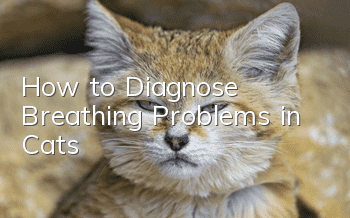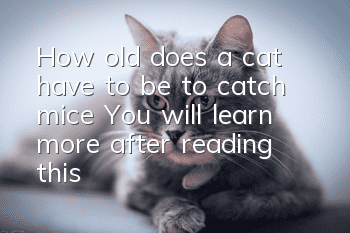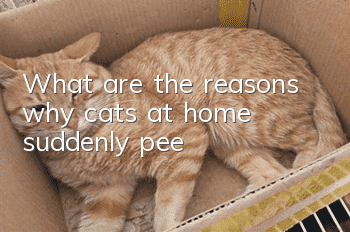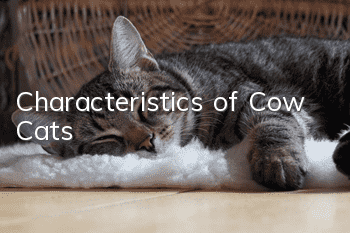How to Diagnose Breathing Problems in Cats

Regarding the symptoms of cats’ breathing, different causes will have different phenomena. Diseases of many internal organs can lead to abnormal breathing. We cannot draw conclusions based only on some symptoms. The following is Let’s give two examples to discuss the diagnosis of cat breathing problems.
Case 1
Domestic cat, 7 years old, domesticated, usually eats cat food. Everything was fine yesterday. But this morning it suddenly howled, could not stand on its hind legs, and was panting rapidly. After being sent to the hospital for clinical examination, it was found that the patient was breathing abdominally. It could be determined that there was something abnormal in the chest. The body temperature was 37.2, howling, and suddenly struggling. The hind limbs could not stand. First, the mechanical injury was ruled out after examination, and then palpation and compression of the hind limbs were performed. , but the cat had no deep pain sensation and its hind limbs were cold. After opening the foot pads, it was found that the foot pads were gray-purple in color and cyanotic, and the femoral artery pulse in the hind limbs completely disappeared.
There are many symptoms that cause cyanosis in cats. Cyanosis is divided into central cyanosis, peripheral cyanosis, and hematogenous cyanosis. Central cyanosis is mainly caused by pulmonary ventilation or ventilation dysfunction, and pulmonary ventilation dysfunction is mainly seen in lung diseases. Such as pulmonary congestion, pulmonary edema, pulmonary hemorrhage, emphysema, etc. This cat was suspected to have saddle thrombosis based on the above symptoms. Clinically, saddle thrombosis in cats often has the following symptoms, including pain and even howling, paralysis, pale mucous membranes, paralysis of hind limbs without pulse, and fluctuating body temperature. Further laboratory tests and X-rays later revealed pulmonary edema.
Feline saddle thrombosis is mainly caused by feline hypertrophic cardiomyopathy (HCM), and about 48% of cases can develop secondary to this disease. HCM in cats is hereditary. Cats with hyperthyroidism may cause HCM secondary to cardiomyopathy, thrombus in the left atrium, mitral valve, and endocardial wall, as well as bacterial endocardial disease. Inflammation occurs when vegetations formed on the mitral valve or diseased endocardium fall off and then enter the aorta with the blood flow to form embolism.
After the occurrence of thrombosis, it will have systemic effects. The affected limbs may suffer from large-scale tissue necrosis (blackening of the skin and foot pads), causing severe metabolic disorders, manifested as hyperkalemia, myoglobinuria and metabolic acidosis. , eventually leading to kidney failure, so it must be treated in time.
For this cat, the cat’s saddle thrombosis should be treated first. You can take diuretics, anticoagulant therapy, aspirin, etc. Then you need to do cardiac ultrasound examination, blood routine, and biochemical tests to judge the degree of cardiomyopathy.
Case 2
American shorthair cat, 6 months old, with a disease duration of half a month, has asthma, the owner is not at home and the old man is raising it, eating and drinking okay, but it is a bit serious today. He was sent to the hospital for examination and found to have abdominal breathing, unwillingness to walk, and mouth breathing. Subsequent laboratory X-ray examination showed obvious enlargement of the heart outline, upward movement of the trachea, thickening of the blood vessels in the anterior pulmonary lobe, mild increase in density of the anterior pulmonary lobe, mild widening of the anterior mediastinum, and lateral view.The heart occupies 4 intercostal spaces. An electrocardiogram showed increased R wave, QRS complex width and mean electrical axis shift to the left, suggesting left ventricular hypertrophy. Cardiac ultrasound examination: There was no pericardial effusion, but significant dilation of the left atrium and left ventricle was seen, and the initial diagnosis was congenital heart disease.
The causes of congenital heart disease in cats generally include ventricular or atrial septal defects, arterial insufficiency, pulmonary stenosis, quadruple malformation of Fallot, etc. Some cats with congenital heart malformations will develop soon after birth. After death, some are more fortunate and will recover naturally, but some will develop symptoms such as developmental delay, listlessness, pale and purple skin, difficulty breathing, and even fainting a few months after birth.
- How long does it take for a female cat to give birth to a second litter?
- What to do if there are granulations on the cat’s mouth
- Why do Siamese cats always meow?
- Will cats be poisoned if they eat crabs?
- Can cats eat steamed eggs?
- Why won’t cats let their bellies be touched?
- At what age is the best age for male cats to undergo neutering surgery?
- How to cultivate a good life routine for cats
- Why do cats always like to lick tape?
- How to choose a cat litter box



